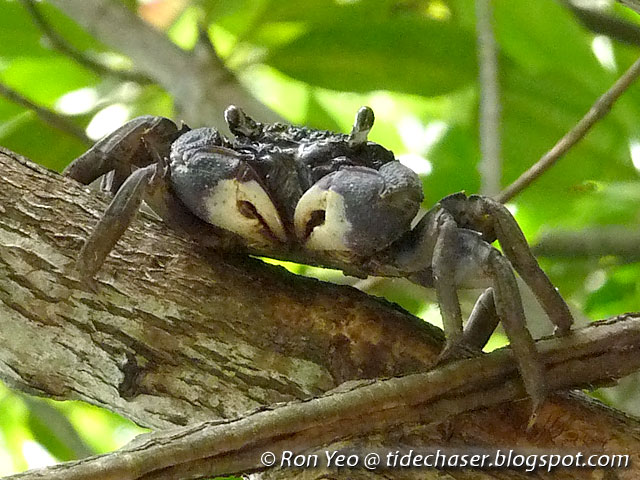When I told my friends and family, I was dedicating a year to study abroad on this small island, they would always inquire, “Singapore?” Once I landed, local classmates would ask, “Why did you choose Singapore?” I guess a common question is, “What makes Singapore so special?” After a field trip with my NUS GE3255 class to the Sungei Buloh Wetland Reserve (SBWR), I now know why!
Impressive Root Systems
Singapore’s mangrove forests are rich with plant and animal diversity. I found the vegetation most interesting, from the immense canopy cover to the fascinating mangrove roots. I enjoyed identifying their different root adaptations such as the knee roots (Figure 2) or the prop roots (Figure 1).
Mangrove Roots exposed during low tide

Figure 1

Figure 2
Prop Roots of a Bruguiera (left)
Knee Roots of a Rhizophora (right)
I didn’t even notice the crabs at first, but the longer I looked the more I found (Figure 3).

Figure 6
Their intricate root structures are valuable spawning grounds for fish fry, small prawns, and crabs (Figure 6).

Figure 3
I will survive!

Figure 4: Mangroves at high tide. Note root systems are not visible.
Also, I found out that these unique root adaptations are used to survive the intense desiccation and inundation of 2 low and 2 high tides daily. I was able to catch the mudflats during low tide and watch the high tide slowly come in (Figure 4, Figure 5). It’s astonishing that under these stressful, salty and waterlogged conditions, mangroves have found a way to flourish in Singapore.
Or not…
However, these mangroves that make Singapore special are being overlooked and destroyed. According to NParks, less than 1% of Singapore’s original mangroves remain, with SBWR being the largest. Reclamation of mudflats have caused migrant birds passing through Singapore on their way from Australia to Siberia to opt for Malaysian and Indonesian territories instead. Urbanization has led to the degradation and loss of mangroves and driven away the animals that depend on them.
“In the 1820s, mangroves made up 13 percent of Singapore’s total land area. Today, only 0.5 percent remains, and much of these are in military or state land.”
Singapore Infopedia

Figure 5: Young mangroves planted by NParks as part of restoration
That is why it is crucial to conserve and restore what is left. The creation of SBWR at the proposal of the Bird Group Conservation Committee in 1989 demonstrates that citizens can push for government intervention. Replanting native mangroves tree like I observed on my field trip to SBWR is also an important process for restoring the ecosystem.
Most importantly, we as a community can visit SBWR to appreciate and support the conservation of Singapore’s mangroves.
After all, without its natural ecosystems, the prestigious “City in Nature” is just a city.
Leave a Reply